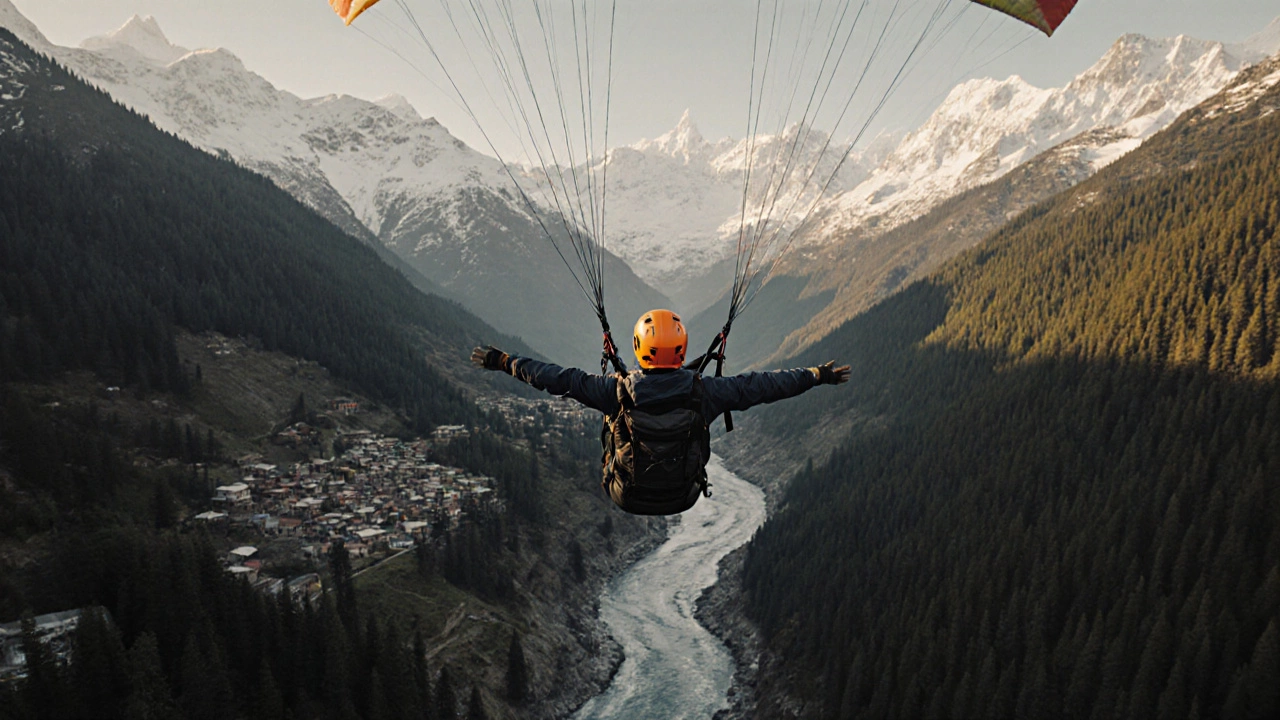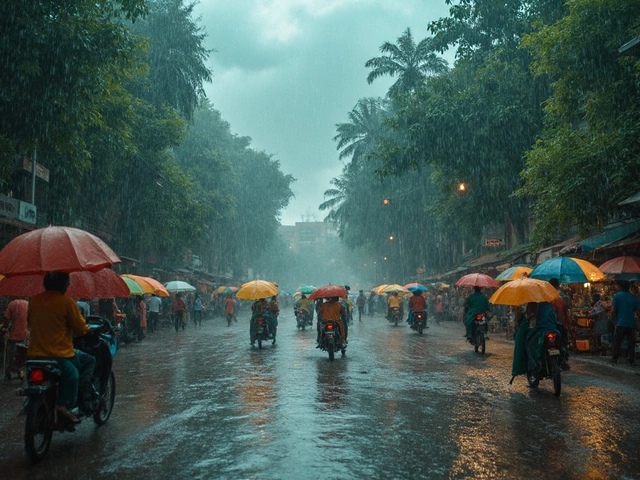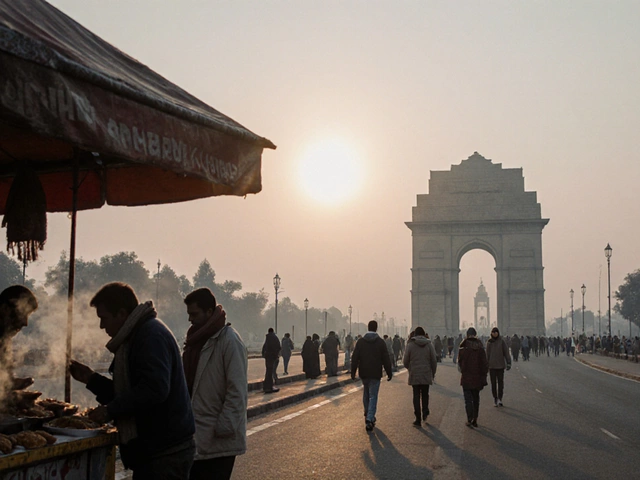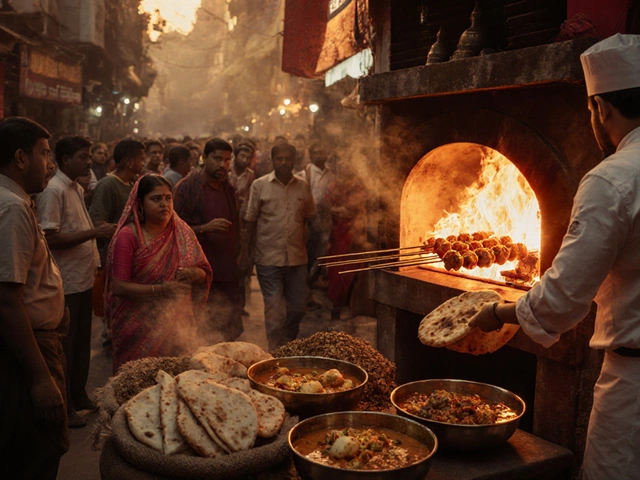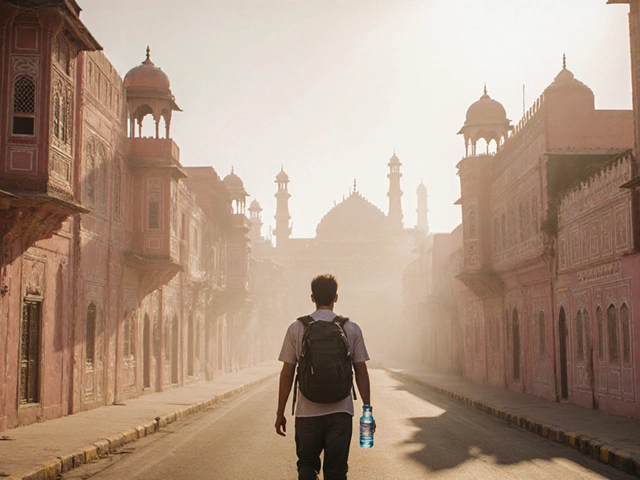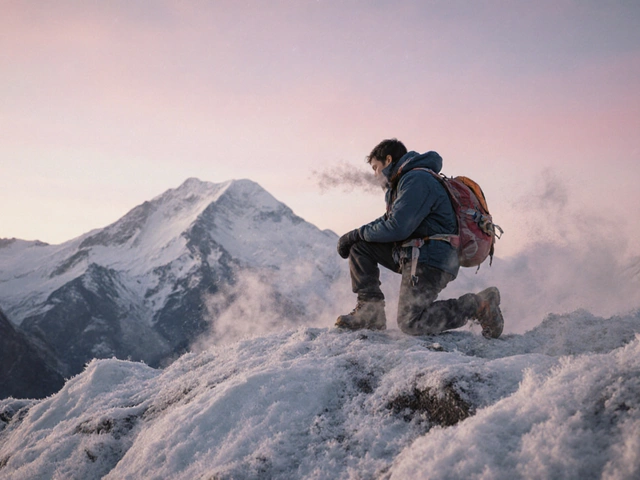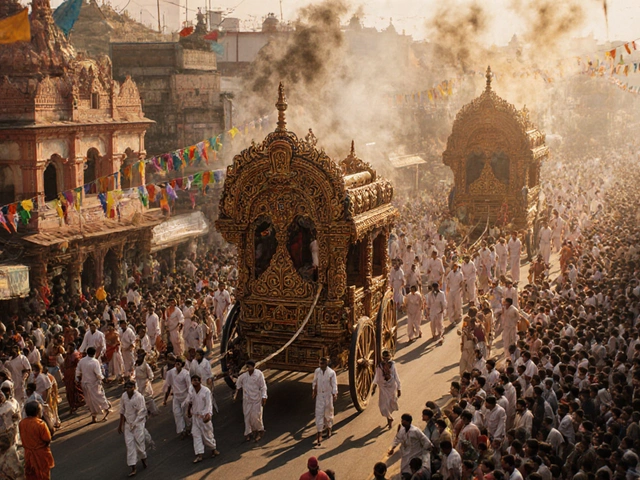Adventure Destination Finder
Select Your Adventure Preferences
Additional Preferences
India isn’t just about temples and beaches. If you’re looking for heart-pounding action, the country delivers some of the most extreme and diverse adventure experiences on Earth. From snow-capped peaks to roaring rivers and desert dunes, there’s a thrill waiting for you-no matter what kind of adrenaline you crave.
Manali and Solang Valley: The Himalayan Playground
If you want to try skiing, paragliding, or zorbing in the mountains, Manali is your starting point. Solang Valley, just 14 kilometers away, is where most of the action happens. In winter, the slopes turn into a snowboarder’s dream. In summer, paragliders launch off the hills with views of the Beas River far below. You’ll fly for 15 to 20 minutes, gliding over pine forests and remote villages. The takeoff point sits at 8,000 feet, and the landing zone is smooth and safe for beginners. Over 50,000 people paraglide here every year, making it one of Asia’s busiest spots for the sport.
For those who want to go faster, try zorbing-rolling down a steep slope inside a giant inflatable ball. Or hit the mountain biking trails that drop 1,200 meters in under 10 kilometers. The trails are rough, rocky, and technical, but guided tours are available for all skill levels.
Rishikesh: The White-Water Capital of India
If you’ve ever dreamed of rafting through Class III and IV rapids, Rishikesh is where you need to be. The Ganges here isn’t just sacred-it’s wild. The stretch from Brahmpuri to Kaudiyala (about 16 kilometers) has some of the most consistent rapids in South Asia. The water flows fast, cold, and clear, carving through rocky gorges. You’ll bounce through ‘Roller Coaster’, ‘The Wall’, and ‘The Wave’-names that tell you exactly what to expect.
Most operators offer half-day trips for beginners, but serious rafters book multi-day expeditions that go all the way to Uttarakhand’s remote reaches. In 2024, over 120,000 rafters hit the Ganges here. The season runs from September to June, with peak flow in April and May when snowmelt swells the river. You don’t need experience-just a life jacket and the willingness to get soaked.
Ladakh: High-Altitude Thrills You Can’t Find Elsewhere
Ladakh is the roof of the world. At over 11,000 feet, the air is thin, the sun is brutal, and the silence is deafening. But that’s exactly why it’s perfect for adventure. Mountain biking here isn’t just exercise-it’s a test of endurance. The route from Leh to Nubra Valley (140 kilometers) climbs past 17,582-foot Khardung La, the world’s highest motorable pass. Cyclists report burning 6,000 calories a day. Few complete it without support.
For those who prefer wheels over pedals, the Leh-Manali Highway (479 kilometers) is one of the most dangerous and beautiful roads on Earth. It’s a four-day ride through landslides, icy rivers, and barren deserts. Only the toughest riders attempt it in a single stretch. If you’re not into bikes, try river rafting on the Zanskar River. The frozen river in winter turns into a trekking route called the Chadar Trek-walking on ice, sometimes knee-deep, with temperatures dropping to -30°C. Only 300 people do it each year. It’s not for everyone. But if you’re looking for raw, untouched adventure, this is it.
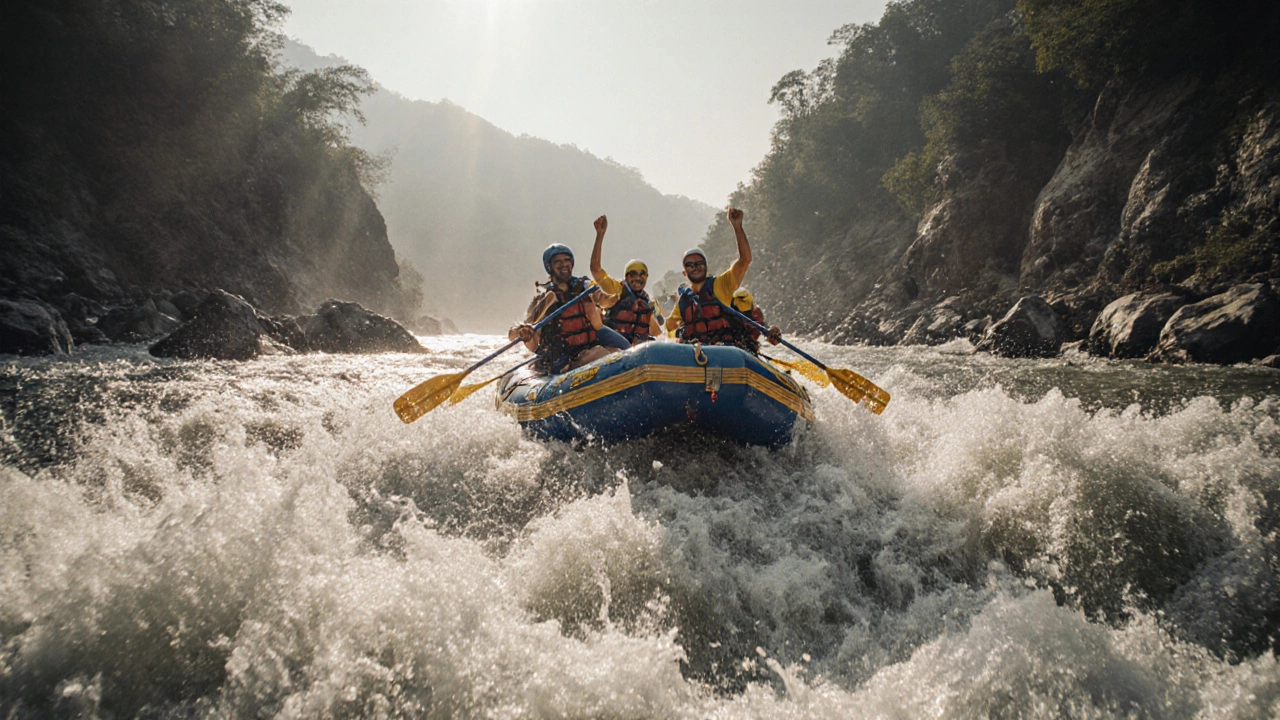
Coorg: Jungle Canopy and Waterfall Rappelling
Coorg, in Karnataka, is green, misty, and packed with hidden drops. It’s not the first place people think of for adventure, but it’s one of the best for waterfall rappelling. The Abbey Falls and Irupu Falls offer vertical drops of 100 to 150 feet. You’ll be clipped into a rope, lowered down moss-covered rock, and splashed by cascading water. The guides here are trained by international agencies and use European safety standards.
Tree canopy walks are another highlight. Suspended bridges connect treetops 30 meters above the forest floor. You’ll walk across ropes, swing on zip lines, and even sleep in hammock nests overnight. The experience is surreal-you’re surrounded by birds, monkeys, and the smell of coffee plants. Coorg also offers mountain biking through spice plantations and white-water kayaking on the Barapole River. It’s adventure with a touch of calm.
Goa: Beyond Beaches-Rock Climbing and Scuba Diving
Goa’s beaches get all the attention, but its cliffs are where the real thrill lies. The laterite rock formations along the western coast-especially near Arvalem and Sanguem-are perfect for rock climbing. Routes range from beginner-friendly slabs to overhangs that require serious strength. The climbing season runs from November to March, when the humidity drops and the rock stays dry.
Underwater, Goa’s coral reefs are surprisingly rich. Dive centers like Dive India and Ocean Divers offer certified PADI courses. You’ll see moray eels, octopuses, and even the occasional whale shark near the Grand Bank. The visibility is 8 to 15 meters, and the water stays warm year-round. Most dives are done from the island of Grande, where the seabed drops off sharply into deep blue. It’s not the Great Barrier Reef, but for India, it’s the best.
McLeod Ganj and Dharamshala: Himalayan Trekking with a Twist
McLeod Ganj isn’t just about Tibetan monks and momos. The trails leading out of town are some of the most rewarding treks in India. The Triund Trek-a 9-kilometer hike from McLeod Ganj to a ridge with panoramic views of the Dhauladhar Range-is a favorite. It takes 5 to 6 hours, and the reward is a sunset over snow peaks you can touch.
For something harder, try the Indrahar Pass Trek (12,000 feet). It’s a two-day journey through alpine meadows and narrow ridges. You’ll cross streams, sleep under stars, and pass ancient stone shrines. The trail is used by locals and pilgrims, so you’ll never be truly alone. Guides are easy to find, and most treks include meals and camping gear.

Andaman Islands: Cave Exploration and Deep-Sea Diving
The Andamans are a secret for serious divers. Havelock Island’s Elephant Beach has a coral wall that drops 30 meters. You’ll swim through tunnels of living coral, past schools of parrotfish and giant groupers. The water is so clear you can see 40 meters down. The best dives are at the wreck of the SS Inchkett, a British cargo ship sunk in 1942. It’s now a marine sanctuary, covered in anemones and soft corals.
For land-based thrills, explore the limestone caves of Baratang Island. You’ll paddle through a mangrove tunnel in a kayak, then crawl through narrow passages lit only by headlamps. The caves are home to bats, unique insects, and ancient rock art. Only 50 people are allowed in per day. You need to book weeks ahead.
What Kind of Adventurer Are You?
Not all adventure is the same. If you want speed, go to Rishikesh for rafting. If you want height, head to Manali for paragliding. If you want isolation, Ladakh is unmatched. If you want greenery and waterfalls, Coorg delivers. If you’re into underwater worlds, the Andamans win. And if you want to combine culture with challenge, McLeod Ganj and Dharamshala offer both.
There’s no single ‘best’ place. The best place is the one that matches your fear level, fitness, and curiosity. Start small. Try a half-day rafting trip before booking a multi-day expedition. Rent gear before buying it. And always, always go with a certified operator. India’s wild places are beautiful-but they don’t forgive mistakes.
What is the safest adventure sport in India for beginners?
Paragliding in Manali and trekking to Triund in McLeod Ganj are among the safest for beginners. Both have well-established operators, trained guides, and clear safety protocols. Paragliding flights last under 20 minutes and use tandem harnesses with dual parachutes. Triund is a 9-kilometer hike with marked trails and regular checkpoints. Neither requires prior experience.
When is the best time of year for adventure sports in India?
The best time is between October and March. This is the dry season across most adventure zones. Rishikesh rafting peaks in April-May due to snowmelt, but October-December offers calmer water for beginners. Manali’s paragliding season runs from March to June and September to November. Ladakh is only accessible from May to October because of snow. Goa’s rock climbing season is November to March. Avoid monsoon months (June-September)-trails get muddy, rivers turn dangerous, and many activities shut down.
Do I need to be fit to do adventure sports in India?
It depends on the activity. For rafting, paragliding, or zip-lining, basic fitness is enough. For trekking in Ladakh or mountain biking in Manali, you need good stamina. Most operators offer beginner-friendly options, but if you’re out of shape, start with shorter trips. Carry a water bottle, wear proper shoes, and don’t push yourself too hard at high altitudes. Altitude sickness is real-take a day to acclimatize before any high-elevation activity.
Can I do adventure sports in India alone?
Yes, but only if you’re experienced. For beginners, going solo is risky. Most adventure operators require you to book through them-they provide gear, guides, and emergency support. Solo travelers can join group tours, which are common in places like Rishikesh, Manali, and Goa. Many hostels organize adventure outings. Never attempt high-risk activities like river rafting or cave diving alone. Insurance is mandatory-most operators won’t let you participate without it.
How much does adventure sports cost in India?
Prices vary by location and activity. A paragliding flight in Manali costs ₹1,500-₹2,500. A half-day rafting trip in Rishikesh is ₹1,200-₹2,000. Rock climbing in Goa runs ₹800-₹1,500 per session. Multi-day treks like Indrahar Pass cost ₹6,000-₹10,000, including food and camping. Scuba diving in Andaman starts at ₹3,500 for a single dive. Most prices include gear, insurance, and a guide. Book through registered operators-cheaper deals often cut corners on safety.
Next Steps: How to Plan Your Adventure
Start by picking one activity and one destination. Don’t try to do everything. Book your trip 4-6 weeks ahead, especially for popular spots like Rishikesh and Manali. Check if the operator is registered with the Indian Mountaineering Foundation or the Adventure Tourism Association of India. Ask for their safety record and guide certifications. Pack light: quick-dry clothes, sturdy shoes, sunscreen, and a reusable water bottle. Leave your ego at home-adventure isn’t about showing off. It’s about feeling alive.
